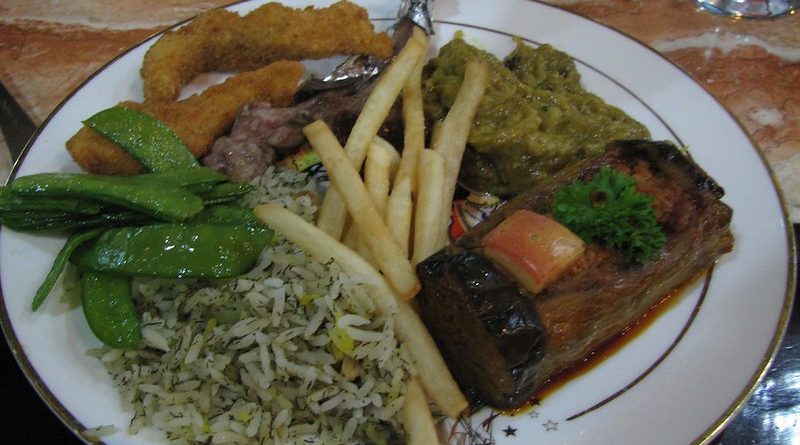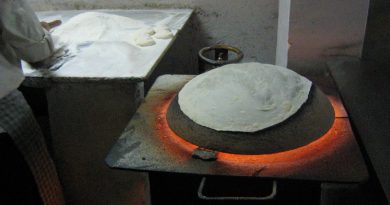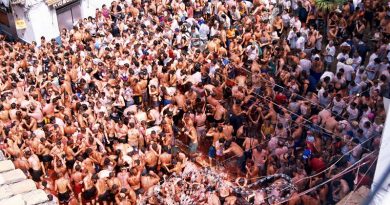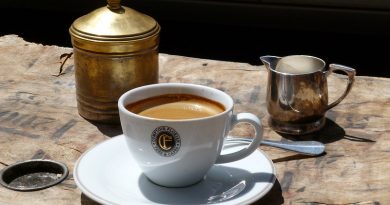Persian Food – A History
With its unique combination of ingredients Persian cuisine had had a remarkable influence on the cooking of the Middle East, the Mediterranean and India
As an important trade centre for thousands of years it has in fact been one of the most influential cuisines in the world., famous for its fragrance, sophistication, elegance and subtlety.
Today, a country of 80 million people, Iran was once home to one of the world’s greatest civilisations.
It’s geography is unique. Straddled between the Caspian Sea in the north and the Persian Gulf in the south, Iran forms a natural highway connecting Europe and Asia.
Persia’s cookery, like China’s, has had thousands of years of change and refinement, but it still retains its ancient roots.
The distinctive use of herbs, spices and fruits, and the unique combination of ingredients make Iranian cuisine a real feast of flavours and textures.
HISTORY
Politically and socially, the Iranian capital ,Tehran ,is at Iran’s cutting edge. But until the 13th century, its only shot to fame was as a producer of high quality pomegranates.
Oranges, pistachios, spinach, saffron are all foods that either originated in Iran or were introduced from here to other parts of the world.
When the Persians first conquered the ancient world, they extended their civilisation from the valley of the Indus in the east to Egypt and Greece in the West. It was at this time that the lemons and saffron, pomegranates and pistachios were introduced to the Mediterranean countries.
Kebabs also originated in Iran and from here, they spread to the rest of the Middle East. They are the equivalent of burgers in the West.
And in Iran they’ve become the national dish.
Most Iranian meals balance ‘hot and cold’ foods and are based on really fresh ingredients: Good health and godliness go hand in hand with good food.You are what you eat is an ancient belief in Iran. It was believed that the heat of temper or fever could be alleviated by the comsumption of ‘cold’ food, while the coldness of melancholy or sickness could be eased by eating ‘hot’ foods.
Kebab for example is considered a perfect meal: the ‘cold’ rice is balanced with ‘hot’ eggs while the ‘cold’ sumac balances the ‘hot’ lamb.
Appetisers
HOT and COLD
Hospitality is the soul of Iranian cooking and its reflected in the appetizers. There are always many of them (mezze style), so that whoever drops in, feels welcome. They balance the rest of the meal: bread, cheese and fresh vegetables and herbs (sabzi). They stay on the table throughout the meal.
The combination of fruit and meat which gives the dishes a unique sweet and sour taste is characteristic of much Iranian cuisine.
PICNICS
Picnics are very much an Iranian tradition. They are part of the social fabric of the country, and amazingly survived the prohibitions of the revolution in 1979 that effectively shut down huge sectors of public life.
Iranians are obsessed with picnics. They have picnics everywhere, even on the side of the motorway. Nothing can stop an Iranian from getting his picnic blanket out and share some food with friends and family….
ROSEWATER
The oasis city of Kashan three hours from Tehran is situated on the edge of the central Iranian desert .The countryside outside Kashan is home to one of Iran’s major exports, rosewater.
People here have been producing rosewater for over 800 years. In pre-Islamic days, rose petal wine was exported by the Persians to China.
To distil rosewater, copper pots are used, each of a capacity of 120-150 liters, which are closed in the same way as a pressure cooker. The bases of the copper pots are fixed into brick and a maximum of 20kl of rose petals is put into every pot that holds 80 litres of water.
SPICES
The Persians acted as middlemen in the trading of spices, silks and exotic goods from the East and selling it on to the West. Markets were busy with thousands of caravans that stopped with their amazing cargo on route to the West.
Isfahan was an important commercial center on the Silk Road for centuries.
Commerce was so important for the Safavid ruler, Shah Abbas I that he re-routed the Silk Road through Isfahan so that his empire would enjoy a trading monopoly. One of the main reasons for this was Isfahan’s safe location in the middle of the country. It wasn’t close to any of the country’s borders, so it was easier to protect from possible invasions.
SAFFRON
But not all spices came from the East. There is one local spice that has become synonymous with Iranian cooking, Saffron .You can’t overstate the importance of this spice in Iranian cuisine.
The king of the Spice World, saffron is as costly as gold, and is even weighed by the carat.
It consists of the stamens of the crocus flower and, as it takes about 15,000 flowers to produce 100g, off saffron . It is hugely labour intensive.
Because of its expense, saffron has always been a symbol of wealth and elegance. The ruling classes of ancient empires used it to enhance their food, dye their robes and perfume their banqueting halls.
By at least 500bc, saffron had spread from Persia to India in the East and Egypt in the West.
RICE
Iranian cooking is not just about the use of spices. The quality of ingredients is key as well. And when we talk about rice, Iranians take it to another level.
The success in producing a fine dish of rice lies in the selection of rice.
Legend has it that rice was introduced to Persia from China in about 835BC. In fact, rice was almost certainly brought into Iran by Turkic tribes via northern India some two thousand years ago.
There are five main types of rice produced in Iran:
1. The very best rice is called Ambar-boo (amber-scented). It has a fine, very long grain, pointed at both ends.It emits great frangance and when cooked, grains stay separate and become white, fluffy, and even longer. This rice strain was usually reserved for use by the imperial court.
2. The Darbari (imperial court) rice is of great quality. It is hard, long grained and fragrant and affordable only by the wealthy or for very special occasions.
3. Dom Siah rice (black tailed) rice is also used for special occasions . It is a variety of Basmati- very long, hard, aromatic and iwth a creamy transparency.
4. Sadri rice is the one eaten by most families. This was brought to Iran from India in the 19thcentury
5. Gerdeh rice (round) or champa variety is short grained, almost round rice that breaks easily and is very starchy. It’s used mainly for puddings, stuffings and meatballs.
Despite the Iranian love for rice, it’s not the staple of Iran. It’s for holidays and special days.
Thr 16th century is when royal cooks turned rice into splendid dishes that became the crowns of Iranian cuisine. Some Safavid creations were rice dyed blue with indigo or studded with real jewels…
All Iranians aim to get a good Tahdik . This refers to the golden, sticky crust which is encouraged to form in the bottom of the pan.
Once the rice is cooked, it’s time to learn how to use assorted secret ingredients at the bottom of the pan to create the perfect crust. The most common variant is to use saffron, by sprinkling a little steeped, ground saffron into the sizzling ghee just before starting to layer up the rice.
TEA
Teatime is a great Iranian institution, and tea houses are a centre for social life like a bar or pub in western countries.
ISFAHAN
Isfahan is known as the ‘city of mosques’. Islam came into Iran around AD637 when the Arabs defeated the Sassanians.
A giant central square was built here 400 years ago by Shah Abbas. He built it as a massive polo pitch . This was the most popular sport at the time and Shah Abbas would watch it his palace.
The magnificent mosque next door is one of the most stunning buildings in Iran.
It’s completely covered, inside and out, with the pale blue tiles that have become an Esfahani trademark.
While the Moslems had exploded onto the scene with their new religion, they were in turn overwhelmed by the culinary artistry of Persia. So when they swept along the Mediterranean and up into Spain, they took Persia’s cuisine with them.
GAZ
Isfahan is famous for its sweets, specially Gaz, which has become Iran’s most popular sweet.
Gaz is a delicious blend of nougat usually mixed with pistachios or almonds and rosewater. There is huge competition in Iran between gaz men – every town claims the origin of the confection and maintain that theirs is the best.
YAZD
The desert city of Yazd is one of the oldest living cities on earth. In order to survive, both the city and its people had to adapt themselves to the desert. In order to feed themselves . Two unique and ancient technological innovations helped them
Chimneys you see everywhere here are called Badgirs. They are in fact ancient ventilation systems. They gather the faintest breezes of the desert and channel them into the building below.
IRRIGATION
Persia has been shaped by its mountains. In the winter months, these mountains fill with snow and ice and in the spring the snow melts to form tiny brooks and little rivers which run into the central plateau . To save the precious water, the Persians long ago developed an ingenious system of underground aqueducts (qanats) to carry the cool water directly from the foothills down to the villages scattered across the sunburnt plain.
Some of the tunnels extend up to 200 kilometres in length .
Its thanks to these underground aqueducts that desert cities like Yazd exist at all. There couldn’t be any piece of land cultivated in this arid terrain without them.
BYRIANI
If you have been to India, you may recognise one of its classic dishes , Byriani
It’s place here is all thanks to the Mongolian hordes that seized Persia in the early 13th century.
The Mongols had little cultural heritage of their own so they absorbed the Persian language, religion and cuisine.
Two centuries later, one of the Iran’s Mongol rulers, a descendant of Genghis Khan, established the Mughal regime in India. And of course, he took with him Iranian culture, religion and food.
Many culinary roads lead back to Persia..Ancient influences still impact on what we eat on a daily basis around the world and many of these influences and can be traced back to the land of Persia.




